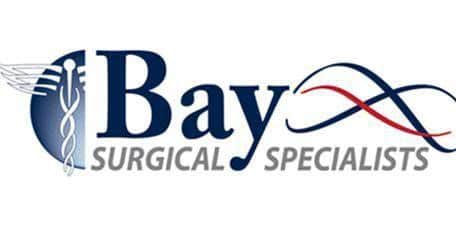Venous Disease
Patients can rely on the Board-certified surgeons to address their venous disease with expert care. Venous disease is an encompassing term that describes conditions that impact the veins and their ability to move blood towards the heart.
Venous disorder is an encompassing term that includes:
- blood clots (thrombosis),
- deep vein thrombosis,
- venous edema,
- congenital venous malformations,
- pulmonary embolism,
- superficial venous thrombosis or phlebitis,
- chronic venous insufficiency or venous reflux,
- varicose veins and spider veins, and
- venous stasis ulcers.
Common Surgical Treatments of Venous Disorders
What is Radiofrenquency Ablation (RF Closure)?
Radiofrequency Ablation is a minimally-invasive treatment for chronic venous insufficiency, the cause for varicose and spider veins. It is a safe and effective method where a surgeon uses a catheter to delivery an electrical current produced by radio wave. The electric current heats the vein to stop the blood flow, which causes the blood to re-route through healthier veins.
What is a VenaSeal™ Ablation?
VenaSeal™ is an alternative to radiofrequency ablation, where during the procedure a medical adhesive is injected into a malfunctioning vein (such as a varicose vein or spider vein) and sealed. Similar to radiofrequency a VenaSeal™ closure is performed using a small catheter for a minimally-invasive procedure. The surgeon guide the catheter to the diseased vein and uses a syringe to deliver the FDA-approved medical adhesive. Then the surgeon will compress the area to ensure the adhesive properly seals the area. This is repeated multiple times to effectively close the vein. The goal is similar to radiofrequency ablation: re-route blood to a healthier vein. Patients can expect a rapid recovery and can quickly return to their normal activities.
What is vein ligation and stripping?
Vein ligation and stripping is a minor surgery where the vein is surgically tied (ligation) and possibly removed if warranted (stripping). A surgeon will make a small incision through the skin below the damaged vein. The vein is tied off and the blood re-routes to nearby healthier veins.
What is a vein phlebectomy?
Phlebectomy goes by many names – microphlebectomy, ambulatory phlebectomy, and stab avulsion. A vein phlebectomy is a minimally invasive procedure that removes damaged varicose veins that sit just beneath the skin. A phlebectomy can improve the cosmetic appearance of a patient’s legs and can be completed in conjunction with other vein treatments, if needed, to restore healthy blood flow. A phlebectomy typically does not require a hospital stay and may be performed under a local pain medication.
What is vein sclerotherapy?
Scleroptherapy is an effective way to treat varicose and spider veins. It involves injecting sclerotherapy solution into the diseased veins, which causes the blood vessel to irritate the lining causing it to collapse. The blood re-routes to healthier veins and cosmetically the appearance of varicose veins and spider veins is reduced. The procedure can be performed in the doctor’s office and does not require anesthesia. Our care team can help describe the benefits, side effects and procedure during our consultation.
Treatment of Diabetic Ulcers
Patients with diabetes often suffer from poor circulation and other factors that may cause leg and foot ulcers. Venous skin ulcers (also referred to as stasis leg ulcers) occur when the valve in a vein malfunctions allowing the blood to back up and pool in the vein. The pooling allows for fluid to leak out of the vein and irritate nearby tissues, breaking them down and resulting in an ulcer.
Venous ulcers can cause legs and feet to feel tired, swollen and aching and present with hyperpigmentation (discoloration of the skin), a change in skin texture, and/or a visible ulceration. These types of ulcers can be slow healing and likely to reappear if left untreated. It is especially important for patients with diabetes to have ulcers treated quickly to prevent additional complications. Treatment may involve identifying and repairing (or bypassing) the damaged blood vessels to reduce the pooling and swelling, as well as, correct the blood flow. Each patient is unique, and our care team will coordinate the best treatment course and provide additional information during a surgical consultation.
Procedural & Resource Videos

